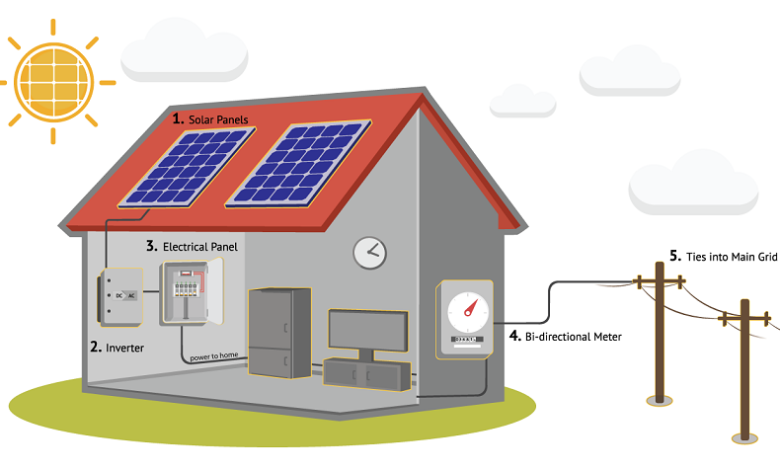The Basic Solar Panel Installation Process

Whether you’re considering solar panels for your home or business, you’ll need to learn the basic installation process. If you’re unsure about what to expect during this process, here are a few tips to get you started.
Find A Solar Installer In Your Area.
Getting a solar panel installed in your home can be a great way to reduce your electric bills and increase the value of your property. Aside from those, the benefits of solar electricity go beyond the bills but also for the environment. However, before you go through the process, you need to find a solar panel installer in your area. Solar companies vary in size, experience, and reputation. Before choosing an installer, you’ll want to gather quotes from at least three companies. Using an online review site is one of the best ways to find a solar panel installer in your region. Customer reviews can give you an idea of the company’s reputation and reliability. If the reviews are positive, you’re probably in good hands. However, consider working with a different company if they are negative. Before choosing an installer, you should consider financing options. You’ll need to explain your payment method to the installer. Each payment method has its tax implications. In addition to financing options, solar companies offer incentives that can help you pay for the installation. You can check with your local government to see if there are any incentives in your area.
Clean The Panels
Keeping your solar panel installation clean is vital to your maintenance process. Whether you do it yourself or hire a company, you should clean it at least once a year. This will help reduce the risk of damage to your panel and improve its efficiency. You can clean the panels yourself using simple tools and household products. However, it is best to use environmentally friendly cleaning supplies. This will prevent damage to the panel’s glass and leave no stains or nasty residue. Solar panels can get dirty depending on where they are installed. For example, the panels may accumulate oil, grime, and dust if they are located near freeways or airports.
Mount The Panels On Your Roof
Whether you plan to install your solar panels or hire a professional installer to do it for you, there are several basic steps to follow. First, you need to decide how to mount the panels. There are several methods, depending on your roof’s shape and size. A ballasted mount is one option that uses large concrete blocks to weigh down the panels. These are cost-effective solutions for mild climates. However, they are not approved for hurricane-prone regions. In addition, they require a structural engineer to install them. Foam adhesive mounts are another mounting option. These are non-destructive and can be installed on a variety of roof types. They are also becoming more popular. A ground mount is another option for mounting solar panels. In this case, you need to make sure that no obstructions are blocking the sun. In addition, you will need to install form bracing and concrete. This can be expensive to ship, so you may want to get these materials from a local supplier.
Connect The Panels To The Battery
Whether you have decided to install solar panels yourself or hire a professional, you will need to understand how to install your system correctly. The installation process will vary depending on your location. For example, installing panels on a roof requires a solid electrical plan. To install solar panels on a roof, the first step is to mount the panels on a solid mounting foundation. These can be ground mount or roof mount. The mounting structure must be sturdy and solid, and you will need to secure it with bolts, nuts, and clamps. After the mounting structure is in place, you will need to install a battery bank. The type and size of the battery bank will vary depending on your system. Battery banks can add thousands to the overall cost of your system.
Get A Warranty
Getting a warranty on solar panel installation can take time and effort. There are some different types of warranties, and they’re not all created equal. It’s important to understand what they are and what they cover.
The performance warranty is one of the most critical warranties to look out for when shopping for solar panels. It guarantees that your panels will produce a specified percentage of electricity output throughout the lifetime of your system. The workmanship warranty is also a good option for homeowners looking to save money on future maintenance. This warranty is generally offered for ten years and covers the installation of the panels. It’s also important to understand that a workmanship warranty isn’t the same as a performance warranty. The solar panel industry standard is a 25-year performance warranty. While this may seem like a lifetime, the average solar system is still working after 25 years of service.



